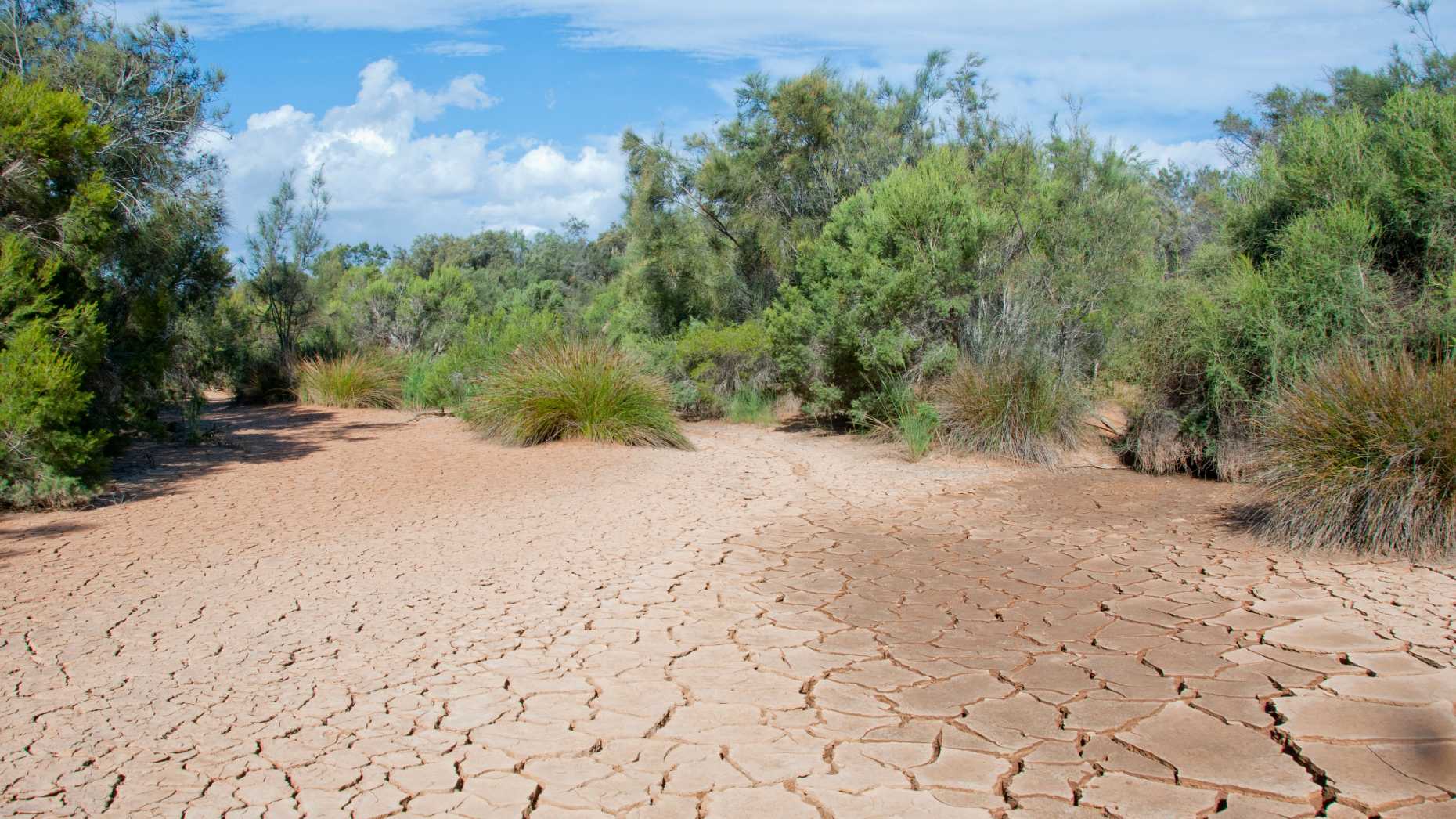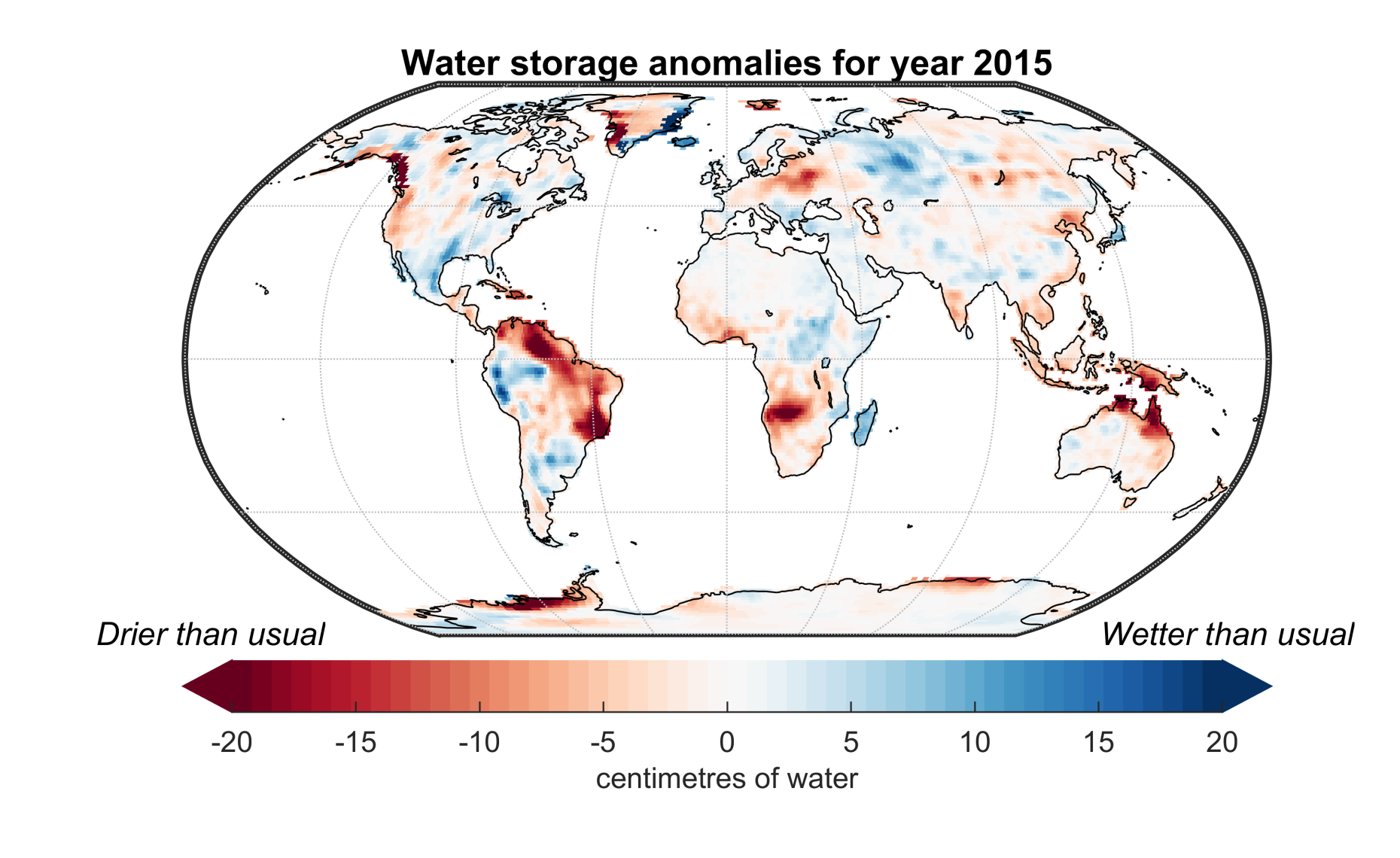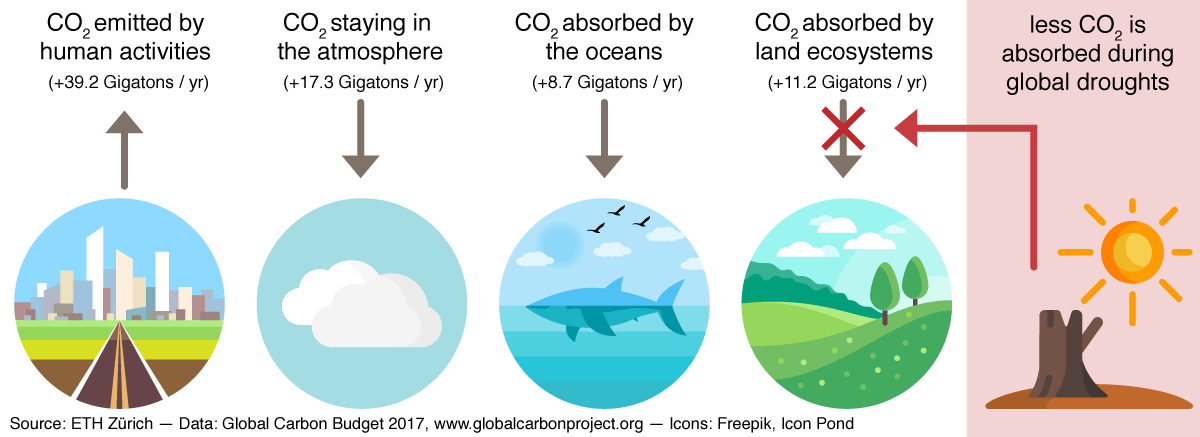Drought increases CO₂ concentration in the air
ETH researchers have shown that during drier years the concentration of carbon dioxide in the atmosphere rises faster because stressed ecosystems absorb less carbon. This global effect is so strong that it must be integrated in the next generation of climate models.

Land ecosystems absorb on average 30% of anthropogenic CO2 emissions, thereby tempering the increase of CO2 concentration in the atmosphere. But plants need water to grow. When a drought occurs and soils dry out, plants reduce photosynthesis and breathe less in order to save water and preserve their tissues. As a consequence, they are no longer able to capture carbon dioxide from the surrounding air and more CO2 remains in the air. While this effect can be easily observed in the lab, measuring its impact on the whole planet has proved quite difficult. One of the greatest challenges has been to measure where and how often droughts occur globally. In a new study, Vincent Humphrey, climate researcher in the lab of Sonia Seneviratne, Professor for Land-Climate Dynamics at ETH Zurich, used innovative satellite technology to measure the global sensitivity of ecosystems to water stress. The study was carried out in collaboration with the Laboratoire des Sciences du Climat et de l'Environnement (France) and the University of Exeter (United Kingdom).
Using satellites to measure droughts
Plants are usually able to access water deep in the soil through their roots. However, conventional satellites only see what happens at the surface and cannot measure how much water is available underground. In the last few years, a new type of satellite mission has been used to measure extremely small changes in the Earth’s gravity field. It was found that some small perturbations of the gravity field are caused by changes in water storage. When there is a major drought in a given region, there is less water mass and gravity is consequently slightly weaker over that region. Such variations are so small that they are imperceptible to humans. But by measuring them with satellites, scientists are able to estimate large-scale changes in water storage to an accuracy of about four centimetres everywhere on the planet.

A faster rise in drier years
Using these new satellite observations of water storage, Vincent Humphrey and his colleagues were able to measure the overall impact of droughts on photosynthesis and ecosystem respiration. They compared year-to-year changes in total water mass over all continents against global measurements of CO2 increase in the atmosphere. They found that during the driest years such as 2015, natural ecosystems removed about 30% percent less carbon from the atmosphere than during a normal year. As a result, the concentration of CO2 in the atmosphere increased faster in 2015 compared to normal years. At the other end of the scale, during the wettest year on record in 2011, CO2 concentrations increased at a much slower rate due to healthy vegetation. These results help us understand why atmospheric CO2 growth can vary a lot from one year to the other, even though CO2 emissions from human activities are comparatively stable.
Crucial for monitoring emissions
During the last century, the concentration of CO2 in the atmosphere has been steadily increasing because of human activities. “Now that most countries around the world have agreed they should limit CO2 emissions, we are facing the challenge of monitoring human CO2 emissions to a level of accuracy higher than ever before,” says Vincent Humphrey. In order to precisely evaluate the impact of climate policies, researchers must first develop vegetation models that can quantify and predict the perturbations introduced each year by natural ecosystems. “Thanks to our new results, we can now prove that the effects of droughts are stronger than has so far been estimated by vegetation models,” emphasises Sonia Seneviratne. Ultimately, these observations will be integrated into the next generation of models. They should improve the ability to track CO2 emissions and verify that they meet the targets set in international climate agreements.
Reference
Humphrey V, Zscheischler J, Ciais P, Gudmundsson L, Sitch S, Seneviratne SI: Sensitivity of atmospheric CO2 growth rate to observed changes in terrestrial water storage. Nature, 30 August 2018. doi:external page10.1038/s41586-018-0424-4call_made

